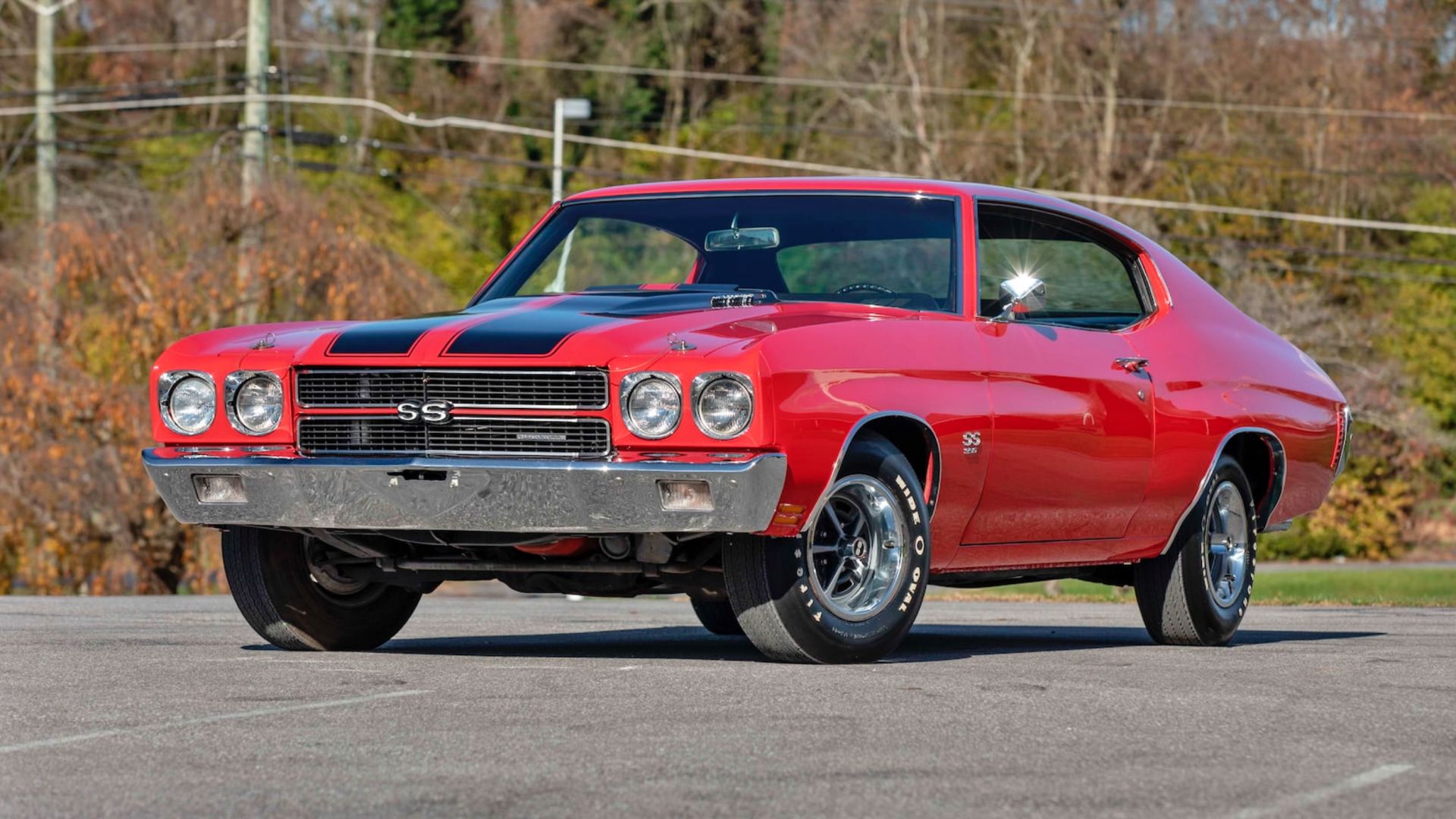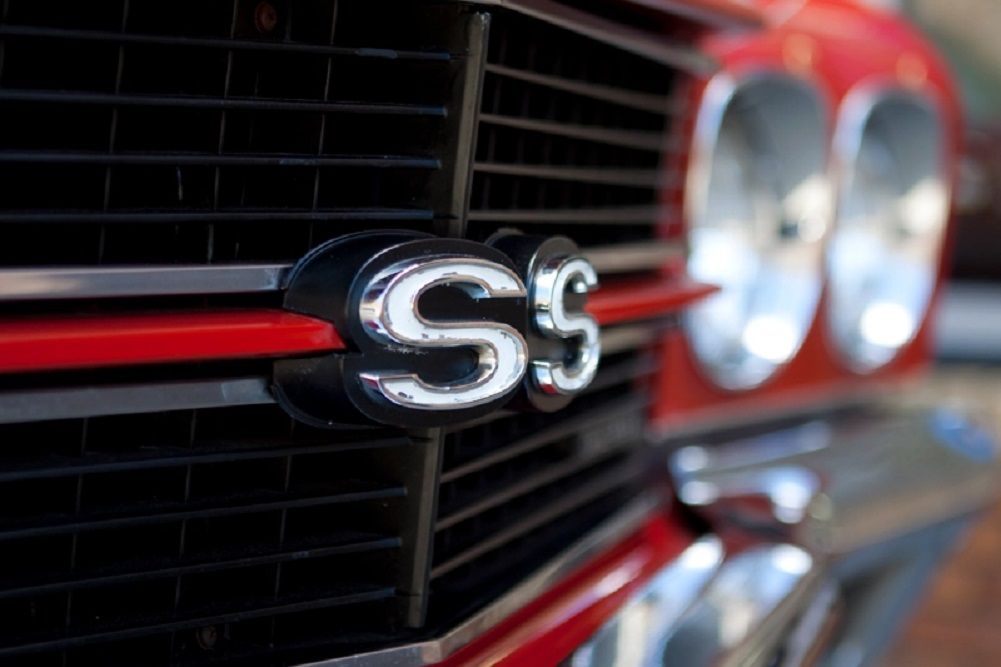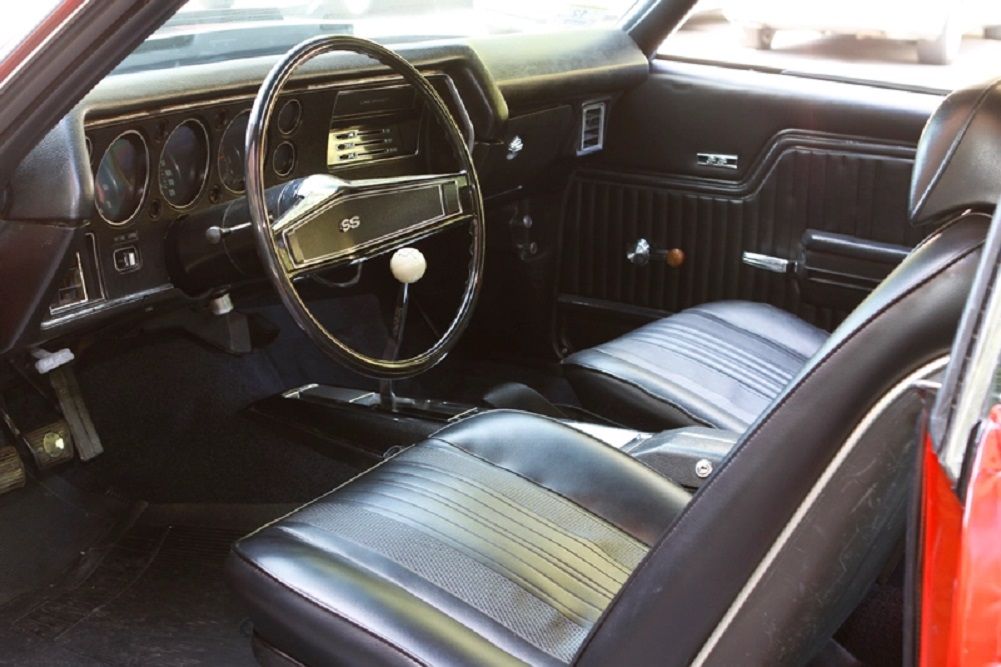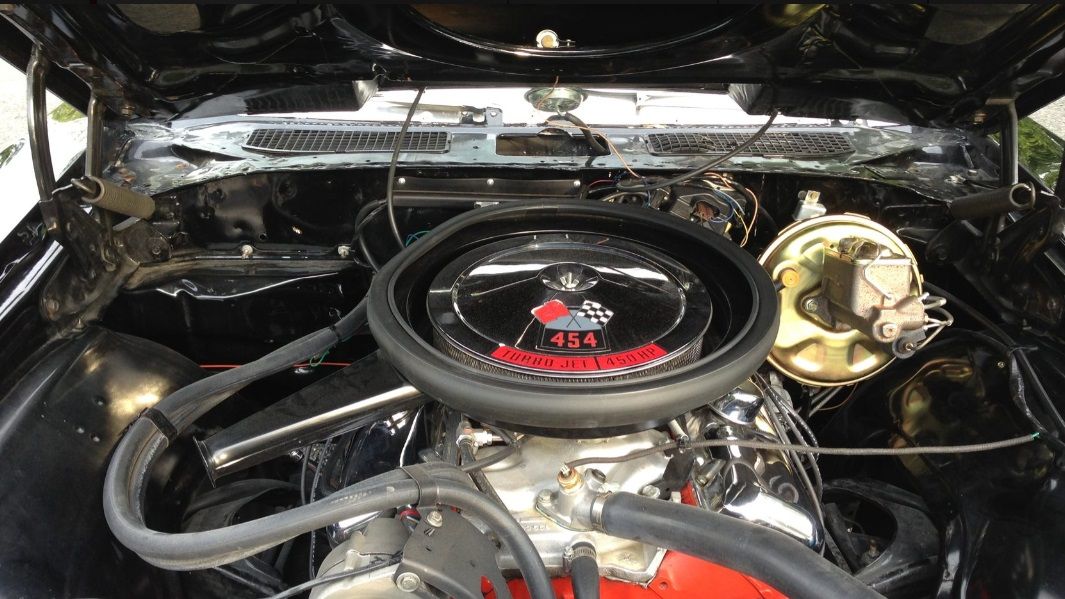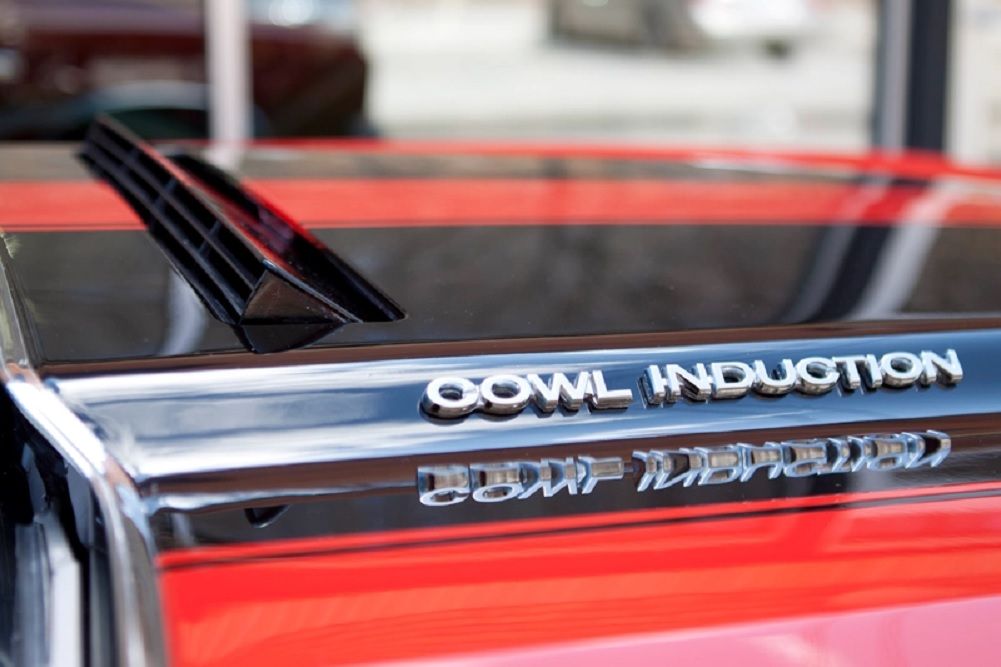By the time the 1970 Chevrolet Chevelle hit the streets back in the day, the Chevelle had already earned the nod as “America’s most popular mid-size car.” The Chevy icon is arguably one of America’s most sought-after muscle cars of its time. The Chevelle first rolled off the production line for model years 1964 to 1978.
Along with the Buick Special, Olds F-85, and Pontiac Tempest, it came to life as a mid-sized vehicle built on General Motors’ second introduction of the A-body platform. Now, more than five decades later, the entertainment industry, the masses, big leaguers, and gearheads alike can’t get enough of the 1970 Chevrolet Chevelle.
1970 Chevrolet Chevelle
- 454 LS6 Option
- Postitraction
- Muncie 4-Speed Option
- Convertible Available
- Functioning Cowl Induction Hood with Hood Pins Option
- New Coke Bottle Styling
- Model: Chevelle / Chevelle SS 454
- Engine:: Turbo-Thrift 250 / 454 LS6
- Power Output: 150 HP / 450 HP
- Torque: 235 LB-FT / 500 LB-FT
- Transmission: Fully-Synchronized 3-Speed, 4-Speed, Powerglide, Turbo Hydra-Matic
- Driveline: Rear-Wheel Drive
- MSRP: $2,800 to $3,600+
- American Icon
- Big Power
- Resto Parts Commonly Available
- Heavy Vehicle
- Uncomfortable Rear Seating
- Braking System
An Illustrious Past
Chevy launched the first of three generations of the Chevelle spanning 1964 to 1967, the second gen from 1968 to 1972, and the third making its appearance in 1973 through 1977. Today, it is the embodiment of the ‘60s and ‘70s hotrod and has made its way into the hands of celebrities as well as mainstream modern pop culture. Eighties rocker Jon Bon Jovi is known for his 1970 Chevelle, while arena rock star – the Boss – Bruce Springsteen, sang about and owned a 1969 Chevelle, which now sits at the Rock and Roll Hall of Fame.
A red ’70 SS is one of the cars that Hip Hop DJ Funkmaster Flex says he “won’t ever part with,” and rapper T-Pain had a memorial mural emblazoned on the hood of his 1970 example. However, that’s only the beginning of the mark that Chevelle has had on history, and musicians don’t have the corner on ownership. Silver screen A-lister Ben Affleck drives a ’66 Chevelle 396 SS, and renowned film director and producer Quentin Tarantino brought his personal ‘64 Chevelle Malibu for John Travolta to drive in the filming of “Pulp Fiction".
Ironically, Tarantino’s Chevelle was stolen from the set before the blockbuster’s wrap in 1994 and found in 2013. Turning the focus to the 1970 Chevelle, an SS appears on the big screen many times, notably as Vin Diesel steers his in “Fast & Furious” and as the star of a high-speed chase in the Tom Cruise hit “Jack Reacher".
1970 Chevrolet Chevelle Performance And Capability
Honing in on the second generation, specifically for 1970, the base model, previously called the 300 Deluxe, was now known only by Chevelle. It was available as a Sport Coupe or four-door Sedan in the following trims:
- SS 454 Sport Coupe
- Malibu Sport Coupe
- Malibu Convertible
- Malibu Sport Sedan
- Malibu Four-Door Sedan
Late-year production provided the SS 396 and SS 454 in both the Malibu Sport Coupe and Convertible.
An El Camino / Custom El Camino also fell into the Chevelle category, along with the Monte Carlo, both of which were available with the SS trim.
Coupe / Convertible | Wheelbase | 112.0 In |
|---|---|---|
Coupe / Convertible | Length | 75.4 In |
Coupe / Convertible | Height | 52.8 In |
Coupe / Convertible | Tread (Front and Rear) | 99.8 In |
Sedan | Wheelbase | 116.0 In |
Sedan | Length | 75.4 In |
Sedan | Height | 53.5 In |
Sedan | Tread (Front and Rear) | 89.8 In |
Engine options for the 1970 Chevelle ran the gamut of power, starting with the standard at 155 horsepower and 235 pound-feet of torque from the Turbo-Thrift 250 Six and stretching to 450 horsepower and 500 pound-feet of torque from the 7.4-liter, 454 cubic-inch big block V-8.
Scorching the road at a top speed of 108 MPH, clocking a zero to 60 MPH in 5.8 seconds and the quarter mile in the 13s, the SS’ 454 LS6 was heaven-sent for the performance-minded Chevelle driver. MuscleCarIllustrated ranks the 1970 Chevy Chevelle SS with this engine as the 2nd fastest muscle car of 1970, only trailing the Plymouth 'Cuda with the 426 Hemi.
ENGINE | ADVERTISED HORSEPOWER | COMPRESSION RATIO |
|---|---|---|
Turbo-Thrift 250 Six | 155 HP (Standard) | 8.5:1 |
Turbo-Fire 307 V-8 | 200 HP (Standard) | 9.0:1 |
Turbo-Fire 350 V-8 | 250 HP | 9.0:1 |
Turbo-Fire 350 V-8 | 300 HP | 10.25:1 |
Turbo-Jet 400 V-8 | 330 HP | 10.25:1 |
Turbo-Jet 396 V-8 | 350 HP (SS Only) | 10.25:1 |
Turbo-Jet 454 V-8 | 450 HP (SS Only) | 10.25:1 |
Regular fuel fed the first three engines and premium for the four latter upgrades. The fuel tank’s capacity was capped at 20 gallons. A single-barrel carburetor came with the Turbo-thrift 250 Six, while a two-barrel topped the Turbo-Fire 307 and the 250-Horsepower Turbo-Fire 350. The four-barrel could be found on any of the other engines. Transmission options varied accordingly with the selected engine and included a fully synchronized three and four-speed, Powerglide Automatic, and Turbo Hydra-Matic.
ENGINE | 3-Speed Standard | 4-Speed Standard | Turbo Hydra-Matic | Powerglide |
|---|---|---|---|---|
Turbo-Thrift 250 Six | X | X | X | |
Turbo-Fire 307 V-8 | X | X | X | X |
Turbo-Fire 350 V-8 (250HP) | X | X | X | X |
Turbo-Fire 350 V-8 (300HP) | X | X | X | |
Turbo-Jet 400 V-8 | X | X | ||
Turbo-Jet 396 V-8 | X | X | ||
Turbo-Jet 454 V-8 | X | X |
In the SS Package, the V-8 Coupe, Convertible, or Custom El Camino was available with the Turbo-Jet engine and a four-speed or Turbo Hydra-Matic transmission only. The SS Trim also included:
- Power Front Brakes
- Dual Exhaust with Bright Tips
- Black Painted Grille, Steering Wheel, and Column
- Special Rear Bumper
- Special Domed Hood
- Suspension
- SS Badging on Grille, Fenders, Rear Bumper, and Door Trim
- Sport Wheels and Special Tires
Standard equipment on the Chevelle included:
- Full Coil Suspension with Computer-Selected Springs
- Flush-and-Dry Rocker Panels
- Delco Eye Energizer Battery
- Delcotron Generator
- Wide-View Inside Day-Night Mirror with Shatter-Resistant Glass
- Direction Signal Control with Lane Change Feature
The braking system included Safety Master self-adjusting brakes and a dual master cylinder brake system with a warning light.
Exterior Design
Exterior edits for the 1970 model redesigned the Chevelle within the “Coke-bottle” styling and a wider stance. In addition to the contoured, flared fender refresh, which gave the Chevelle the same roof-line as the Buick Skylark, a more muscular hood and new front bumper showed up for 1970.
An air-gulping Cowl Induction hood feature gave flavor and function. Marketed with the slogan “you can make our tough one, even tougher,” the addition of the Cowl Induction hood allowed an extra shot of air to the intake. It could be added to the SS 396 or the SS 454.
A revamp of the grille could be seen on the front end, while the rear featured a bumper with a newly integrated tail and backup lights. New SS Sport stripes could be ordered to enhance the hood and the deck.
Several styles of wheel covers for new lower profile fiberglass-belted tires with tread wear indicators were introduced as options in 1970. White or red-line tires could be chosen. The SS was advertised with F70 x 14 white-lettered, wide oval treads that wrapped 7-inch wide mag-type wheels. The six-cylinder rolled on the E78 X 14, and all other V-8s were given the F78 X 14.
A fairly extensive array of exterior color choices included:
- Gobi Beige
- Tuxedo Black
- Astro Blue
- Fathom Blue
- Black Cherry
- Desert Sand
- Autumn Gold
- Champagne Gold
- Green Mist
- Forest Green
- Cranberry Red
- Cortez Silver
- Shadow Gray
- Misty Turquoise
- Classic White
Interior Quality And Technology
Interior revisions and performance enhancements helped the ’70 Chevelle maintain the popularity it had already gained. A seat in the interior cabin revealed a fresh design throughout, including the instrument panel, cluster, and controls. Doors, sidewalls, and carpeting were finished in color-keyed materials. A cloth/vinyl interior was standard for all models except convertibles. Available colors were:
- Black
- Blue
- Gold
- Dark Green
- Turquoise (Sedans Only)
All-vinyl interiors came standard on convertibles in the color choices of:
- Black
- Blue
- Ivory
- Red
- Saddle
For an added charge, all-vinyl bucket seats could be ordered for Sport Coupes or Convertibles. Available colors for buckets were:
- Black
- Ivory
- Red
- Saddle
- Blue (Convertible Only)
- Dark Green (Sport Couple Only)
Debuting bells and whistles for 1970 was an automatic seat-back release, power door lock system, and fingertip windshield wiper control at the turn signal. Other options that could be added to the interior tech of the day were an electric clock, remote control rearview mirror, and rear window defroster. An upgrade of “special instrumentation” could be added to the V-8 Sport Coupe and Convertible.
Audio choices for the pushbutton all-transistor radio were an AM, AM/FM, or a new AM/FM/Stereo with a tape option that allowed cartridges to be inserted through the radio dial. New for the sound system were deep-cone speakers and dimming dial lights.
Popular extras for the Chevelle were:
- Power Disc Brakes
- Variable-Ratio Power Steering
- Power Windows
- Comfortilt Steering Wheel
- Four-Season AC
- Soft-Ray Tinted Glass
- Center Console for the Buckets
- Positraction
- Power Top for Convertible
- Rally Wheels
Safety
Pushbutton buckle seatbelts for all seat positions were standard. Pushbutton buckles on shoulder belts for the front seat positions were available, barring the convertible. Front seat head restraints, a side-guard beam structure, and an energy-absorbing instrument panel were added for occupant protection.
Other safety features included:
- Child Safety Seat
- Mirror Map Light
- Safety Door Latches and Hinges
- Folding Seat Back Latches
- Contoured Windshield Header (Not in Convertibles)
- Thick Laminate Windshield
- Safety Armrests
- Safety Steering Wheel
- Cargo-Guard Luggage Compartment
Anti-Theft features were an ignition key warning buzzer and a steering column lock
1970 Chevrolet Chevelle Price And Availability
Depending on options, the MSRP for a 1970 Chevelle ranged from just under $3,000 to over $4,000.
Drivers that wanted the ultimate in power signed up for the grand-daddy of all Chevelles – the SS 454 LS6. While reports have production numbers at 4,475 for the 1970 LS6, exact hardtop, drop-top, and El Co breakdowns are unclear.
Depending on vehicle quality, owner’s history, resto-mods, and matching numbers, a ’70 Chevelle’s budget could today stretch from $30,000 to over $300,000. A record-making 1970 SS 454 LS6 crossed the block at Barrett-Jackson with a hammer price that exceeded $1 million.
Check out the current market prices for the 1970 Chevrolet Chevelle here.
FAQ
Q: How much is a 1970 Chevelle worth today?
Depending on vehicle quality, owner’s history, resto mods, and matching numbers, a modern-day ’70 Chevelle’s budget could stretch from $30,000 to over $300,000.
Q: What is the most desirable year of the Chevy Chevelle?
The 1970 Chevy Chevelle is the most coveted model year.
Q: How many 1970 Chevy Chevelle SS 454 LS6s were made?
In 1970, there were 4,475 cars built with the LS6 454.

